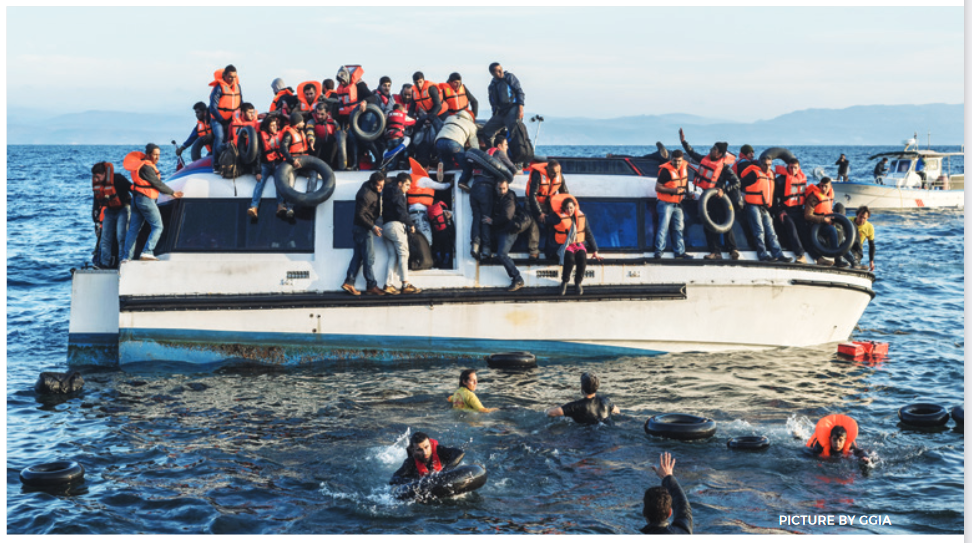
A nation under trauma or learning from the past?
Canada is a country that is composed of immigrants from all around the globe. The average Canadian holds a more positive view of immigration than those in other countries, and therefore it is not surprising that it has a long history of providing asylum to refugees. A sign is that Canada's changed in late 2015 its immigration department's formal title to "Immigration, Refugees and Citizenship Canada (from "Citizenship and Immigration Canada), and its website declares that "our compassion and fairness are a source of great pride for Canadians". Canada's asylum history started when it was the first country to abolish slavery in 1793, leading many fugitive slaves from United-States to seek refuge in Canada.
However, Canada has a dark shadow in its past that colors its current record. In 1939, the S.S St. Louis, a ship carrying German Jewish refugees pleading sanctuary from Nazi Germany, docked on Nova-Scotia's shore after being denied entry by Cuba and the United-States, and ultimately Canada as well. While Canada had substantial economic concerns at the dawn of WW2, today these are not perceived as a reasonable excuse to deny entry to asylum-seekers and send them back, in some cases, to their deaths. To this day, many Canadians recall this event when debating contemporary refugees' crisis. It has almost entirely altered Canada's asylum policy. In 1969, Canada signed the UN Convention Relating the Status of Refugees and its protocol, and in 1986 the UN awarded Canada the Nansen Medal for its outstanding humanitarian tradition of settling refugees. Each year, Canada provides asylum to more than 10,000 persecuted persons, and welcomes another 12,000 refugees from abroad. [Refugee system in Canada]
The refugee system in Canada
Canada works with UNHCR and resettles refugees after they undergo a careful screening system, Refugee Status Determination (RSD)), in order to ensure that there are no security/criminality/health issues, and to validate the asylum-seeker's grounds for the application.
Canada administers three formal programs for refugees resettlements:
1) Government-Assisted Refugees Program (GRA) and the Resettlement Assistance Program (RAP): Through these two programs the government provides immediate and essential services, starting with income support for food and shelter, typically for one year. Sometimes the refugee might also receive temporary accommodation, assistance in finding permanent accommodation and employment, language training and orientation to better understand life in Canada, and links to other federal/provincial resettlements services.
2) Private Sponsors – "Sponsorship Agreement Holders": Sponsors across the country that have an agreement with the government to provide the refugee financial and emotional support, usually for a year. In many cases, these donors are Canadian individuals/communities of the same national origin as the refugee(s), offering a "warm welcome" to the new comers.
3). Blended Visa Office-Referred (BVOR) program Matches refugees identified for resettlement by the UNHCR with private sponsors.
4). Sanctuary Cities An informal, somewhat subversive program. It is rooted in the notion that churches are also a harbor for persons being persecuted – whatever the reason may be. Residents of Sanctuary Cities prevent local authorities from ever inquiring about an individual's immigration status (unless it is court-ordered), thus allowing everyone access to essential city services such as health and childcare, food banks, social housing and the police. The movement started as a political campaign in the 1980s in the United-States, under the slogan "No one is illegal". Initially, it called on the local authorities to shelter refugees fleeing the civil war in Central America.
With time, it spread worldwide, and nowadays it runs in many cities around the globe, including Toronto, Vancouver and Hamilton. This campaign is unique in that was entirely initiated and led by local residents – and not formal governmental authorities – and it is the residents who determine the local policy and its means of implementation. Examples for these means are mandatory training for all city workers and implementation of non-discriminatory rules – including employment law.
Looking back on refugees' absorption in Canada over the years, we see a satisfactory state: culturally and socially, immigrants and refugees influence Canada deeply and vibrantly. We see their integration in all spheres of life, including the media, academia, public service and of course the culinary. However, in their first decade or so past arrival, refugees tend to have lower income than Canadian-born, due primarily to language barriers and adjustments to the Canadian culture of work. Current data shows a growing incidence of poverty among immigrants and refugees, mostly among university-educated and unemployment rates are historically double than those of Canadian-born. [MPI website of migration policy institute]
Looking at the future, Canada's current cabinet members (and future role models) are descendants of varied origins such as India, Ukraine and Afghanistan. One such example is Maryam Monsef, the Minister of Democratic Institutions, who came to Canada with her family as an 11-year-old refugee from Afghanistan. Canada is currently facing an economic recession due to a sharp decline in oil prices and other commodities. Even though, it is finding the ways and means to reach out to those in need and offer them haven. Through this, perhaps, make amends for the SS St. Louis tragedy, its past mistake.
For further reading:
Citizenship and Immigration Canada for more details regarding Canada's refugees systems and campaigns.
Why Canada should take in 20 times more refugees/ Scott Gilmore about the financial meanings.
Bagelman, Jennifer, Sanctuary City: A Suspended State, Palgrave Macmillan Publishers, Basingstoke United Kingdom, 2015.
Nehara Mor


